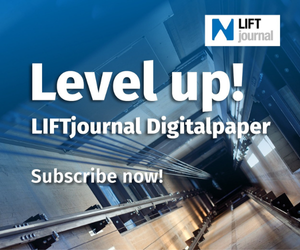Elevator system for overload protection
The engineering teams at Zemic have worked together to make the most efficient and cost effective solution for overload detection systems for elevators and lifting systems.
The engineering teams at Zemic worked together with key elevator manufacturers to develop a new and innovative solution for elevator overload protection. The elevator manufacturers indicated that overload is a main feature, however it would be more optimized when this could be combined with topics such as energy saving motor management and child protection.
Specific product demands
Besides functional requirements the engineering teams were challenged by specific product demands such as shape of the loadcell, installation requirements and specific market requirements.
Zemic introduces three weighing kits based on three different ways lift / elevator companies are measuring the weight. We offer complete solutions to measure the weight under the cabin, under the cable springs and into the cable springs.
Zemic and the Elevator Market:
• Elevator weighing system
• Selected most efficient solution
• Elevator motor management for energy saving
• Zemic Europe, force partner of the Elevator Industry
How the loadcells are used in the Elevator Weighing System (EWS)
The Zemic Elevator Weighing systems have many features. Zemic will mention the unique selling points of the system to show why and how this particular lifting system is used throughout the world. Energy saving is one of the extra requirements which was highlighted. This is the reason the engineers built in the power regulation option for the elevator engine. The power needed to drive the engine depends on the amount of loading weight in the elevator.
In the elevator industry overload indication is one of the key features in each lifting device. Force sensors are highly sensitive and can be permanently damaged by overload and shock overload. This is why the maximum overload % is always given on the force sensor product datasheet.
When developing this sensor we integrated a rubber shock absorber. This elastomer protects the loadcell from dynamic overload forces and secondly provides an equally shared load over the sensors.
Increasing the product system reliability
Some unique features of the elevator force sensors is the round shape for an optimized force introduction and the material used. The working of the loadcells do not depend on the angle of the force introduction. The round shape allows you to compensate non-axial force effects.
The loadcells are suited with a cable spring fitting on the cable exit which protects the wires from bending and breaking, which increases the product system reliability. The metal housing provides additional strength and protection from electromagnetic inteference.
About the Elevator Weighing System: Cabin
Our "Elevator Weighing System: Cabin" has the following important features:
- Indicates when elevator is loaded to 90%.
- Determines if the elevator is overloaded.
- When less than 15kg, the elevator doesn't move (child protection).
- Adjusts engine power required to actual weight.
Alternative Elevator Weighing Systems
In this casestudy you have read the key features and set-up of our Elevator Weighing Kit which can be directly installed underneath the elevator Cabin. This is the most common installation in the elevator industry.
However for existing and installed elevator shafts we developed two systems which can be easily installed to upgrade the existing system.
More product information about the "Elevator weighing system: Into Springs" and the "Elevator weighing system: Under Springs" is available on the Internet. There, you can also download the quick start manual of the EWS-1 indicator.
www.zemiceurope.com





















Write a comment